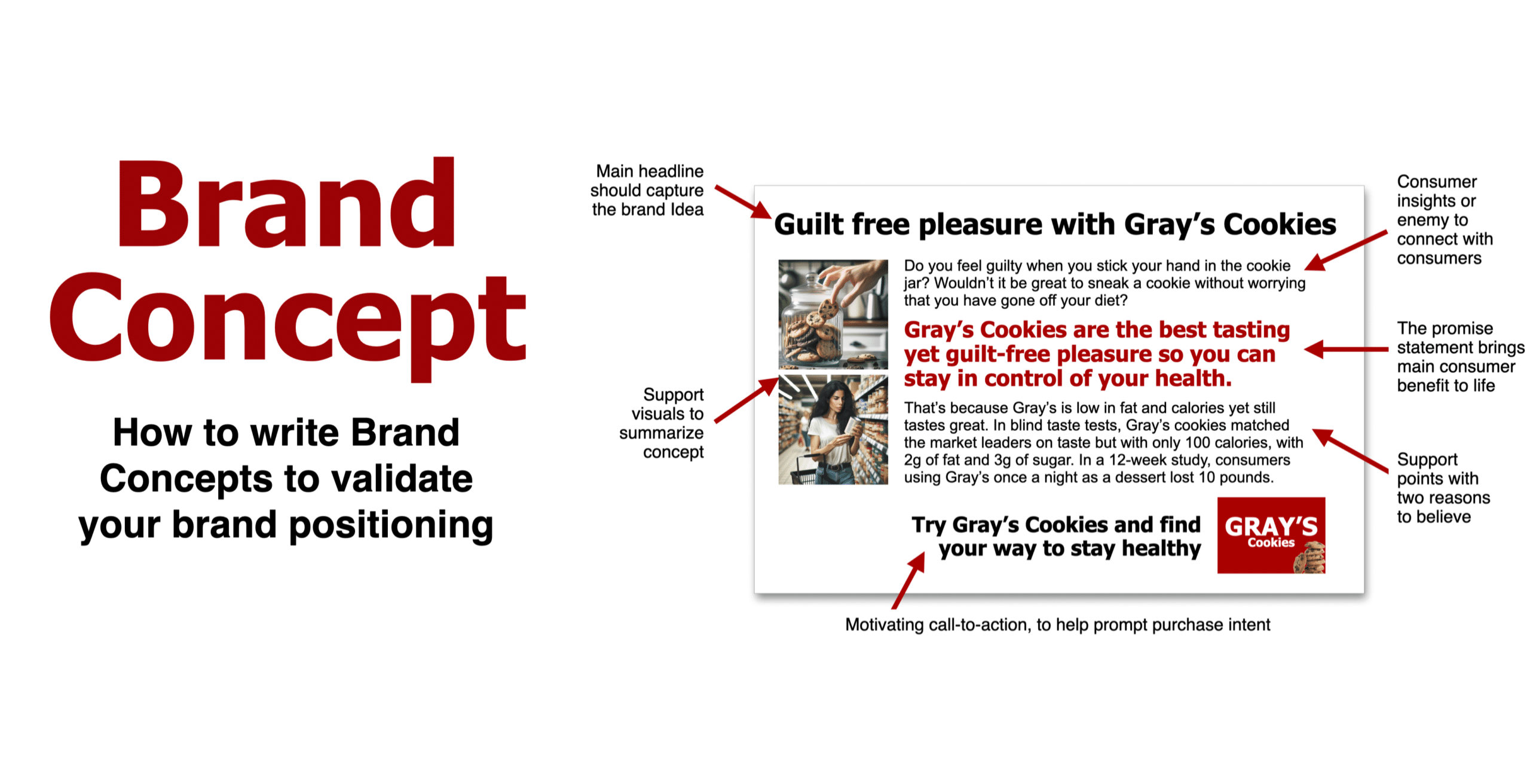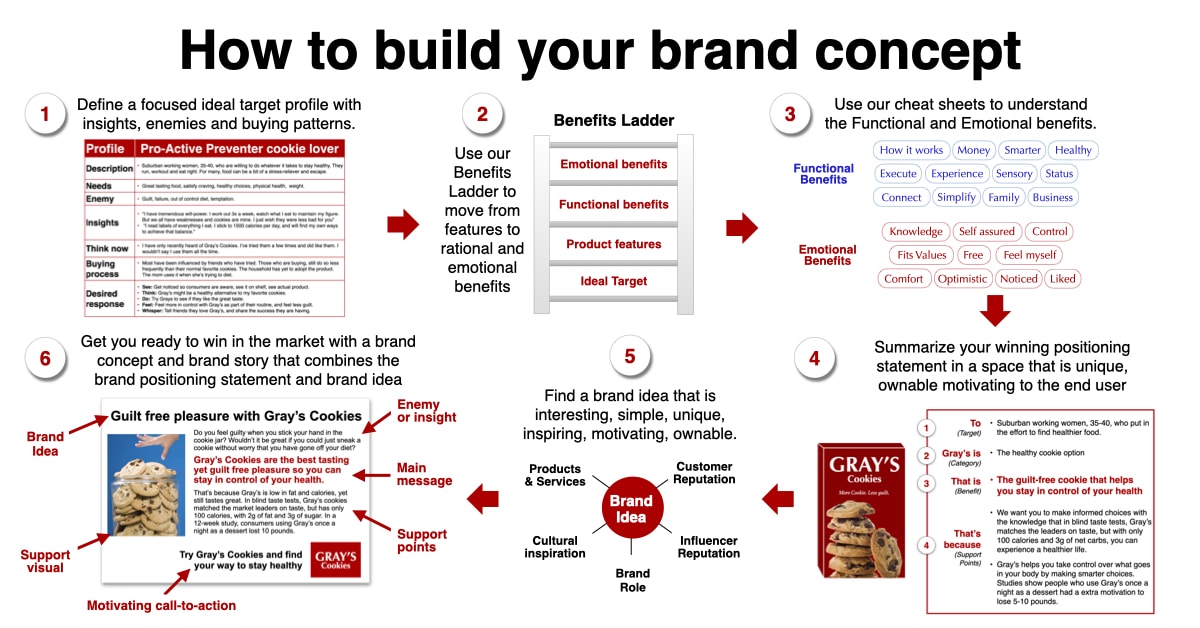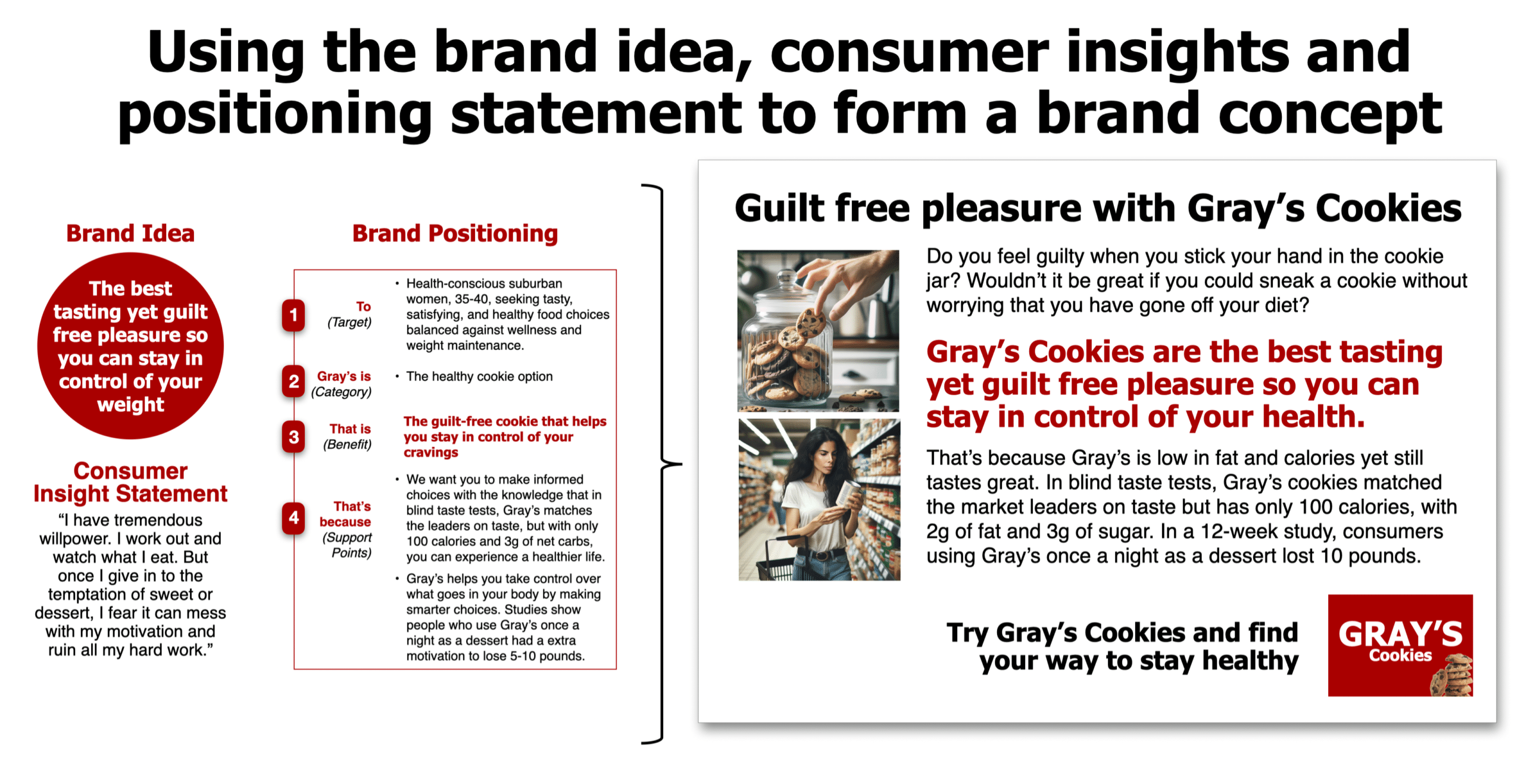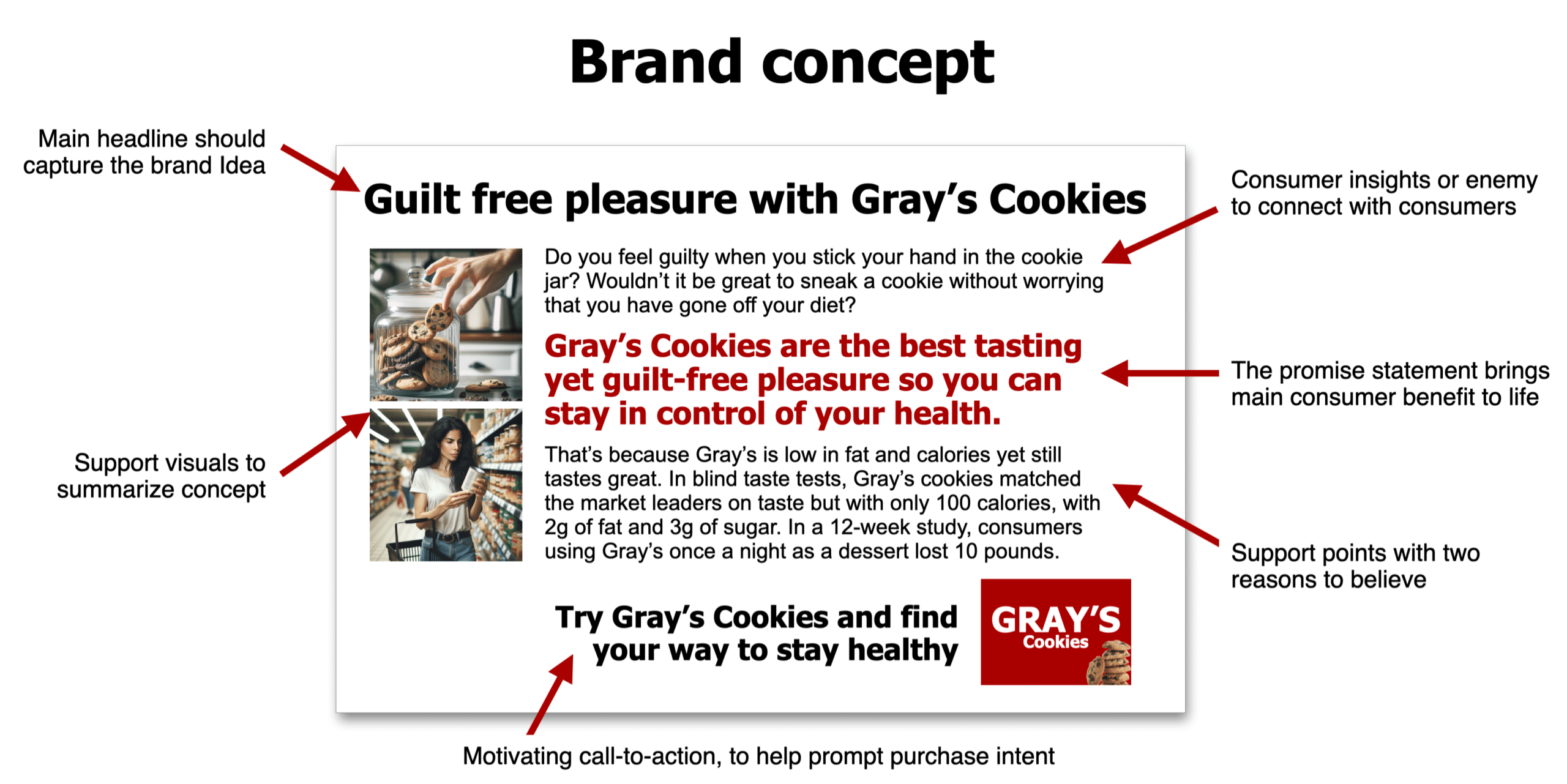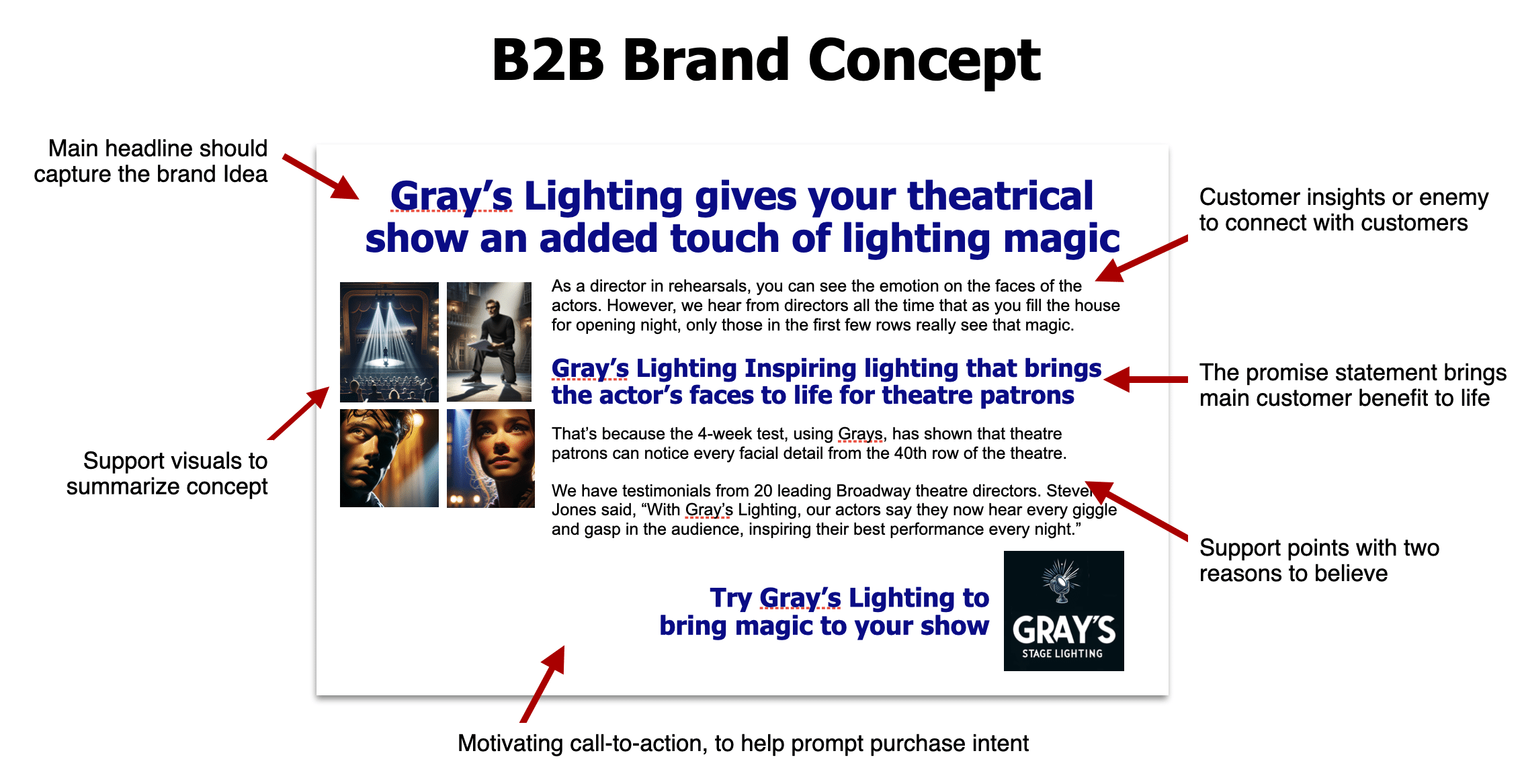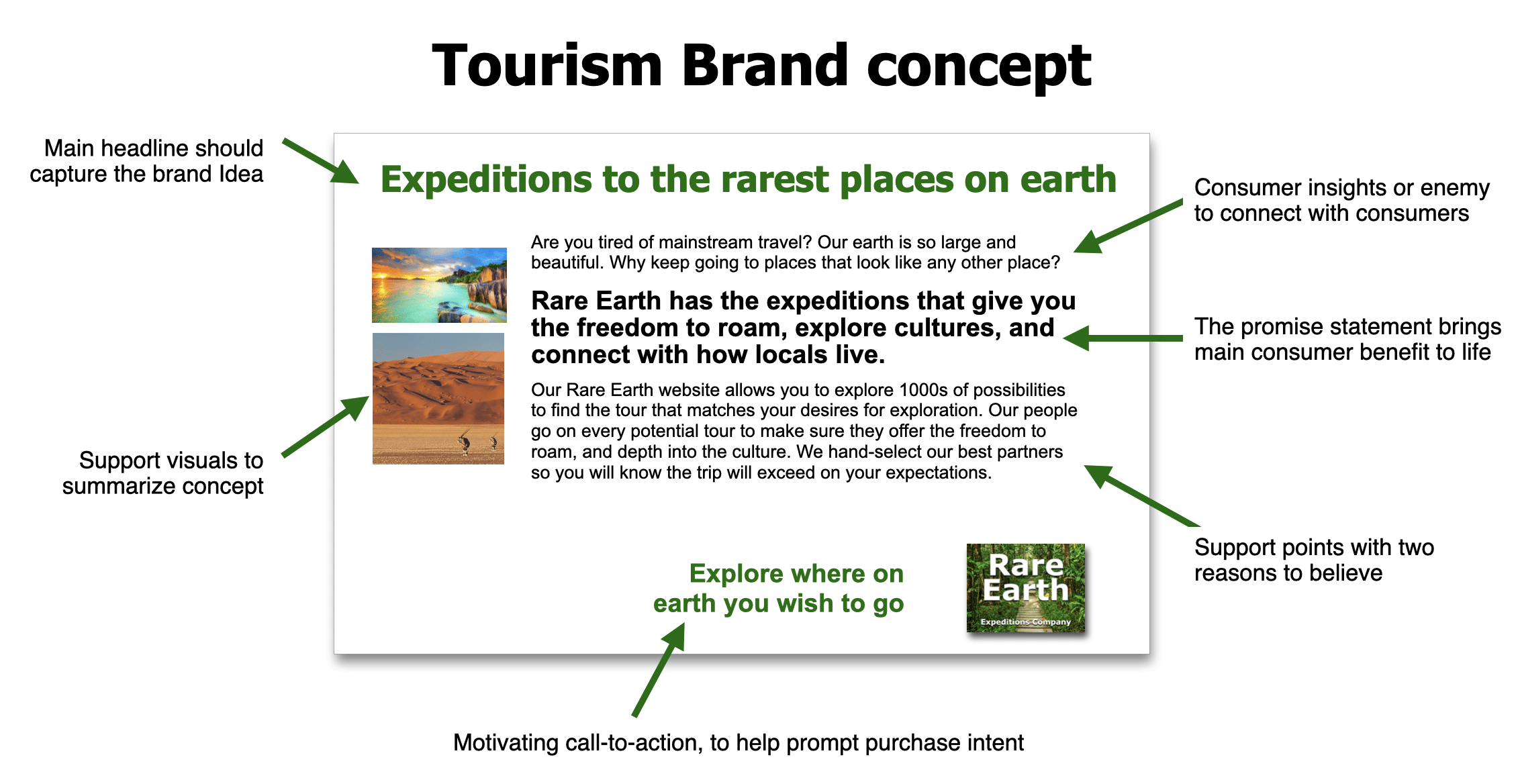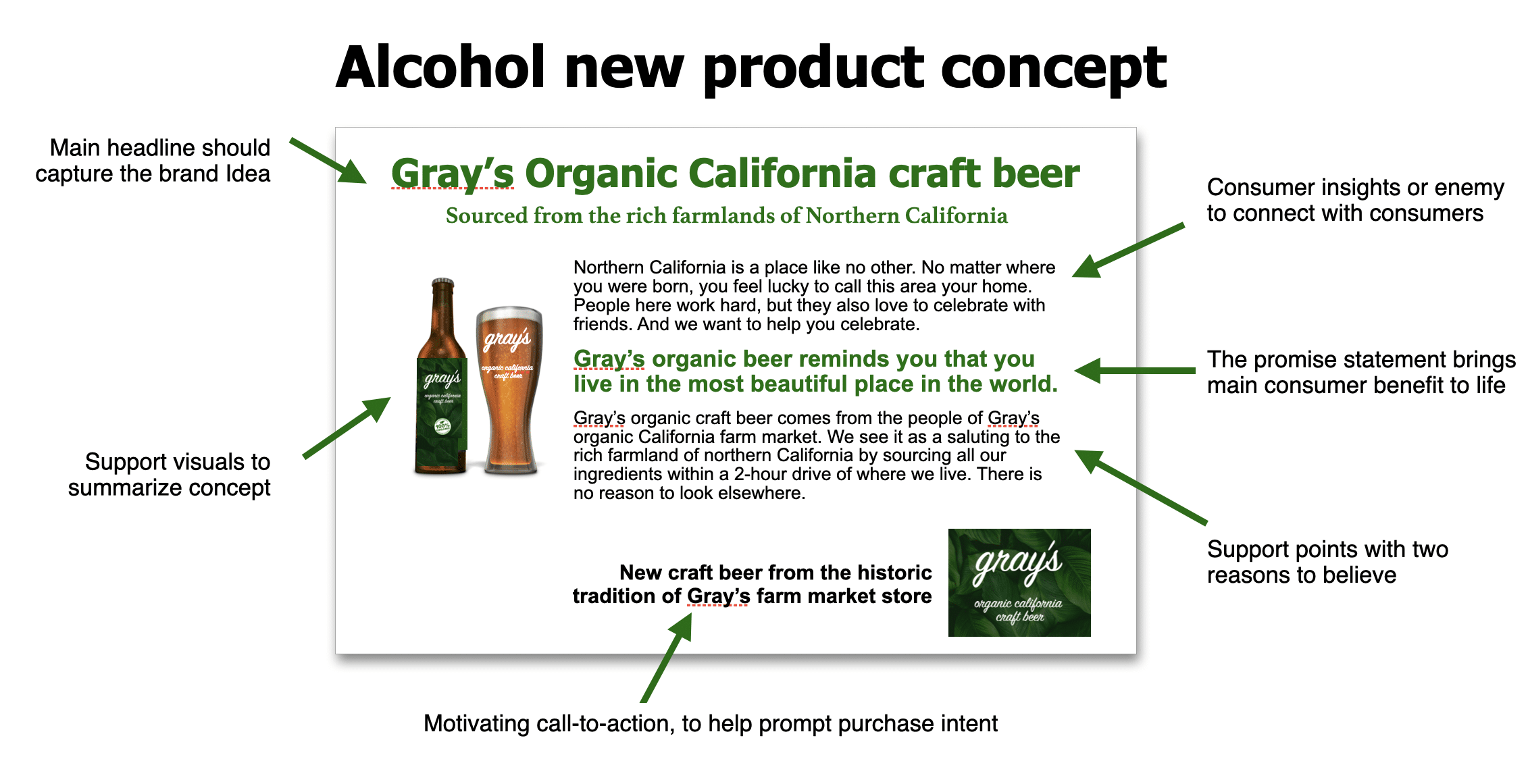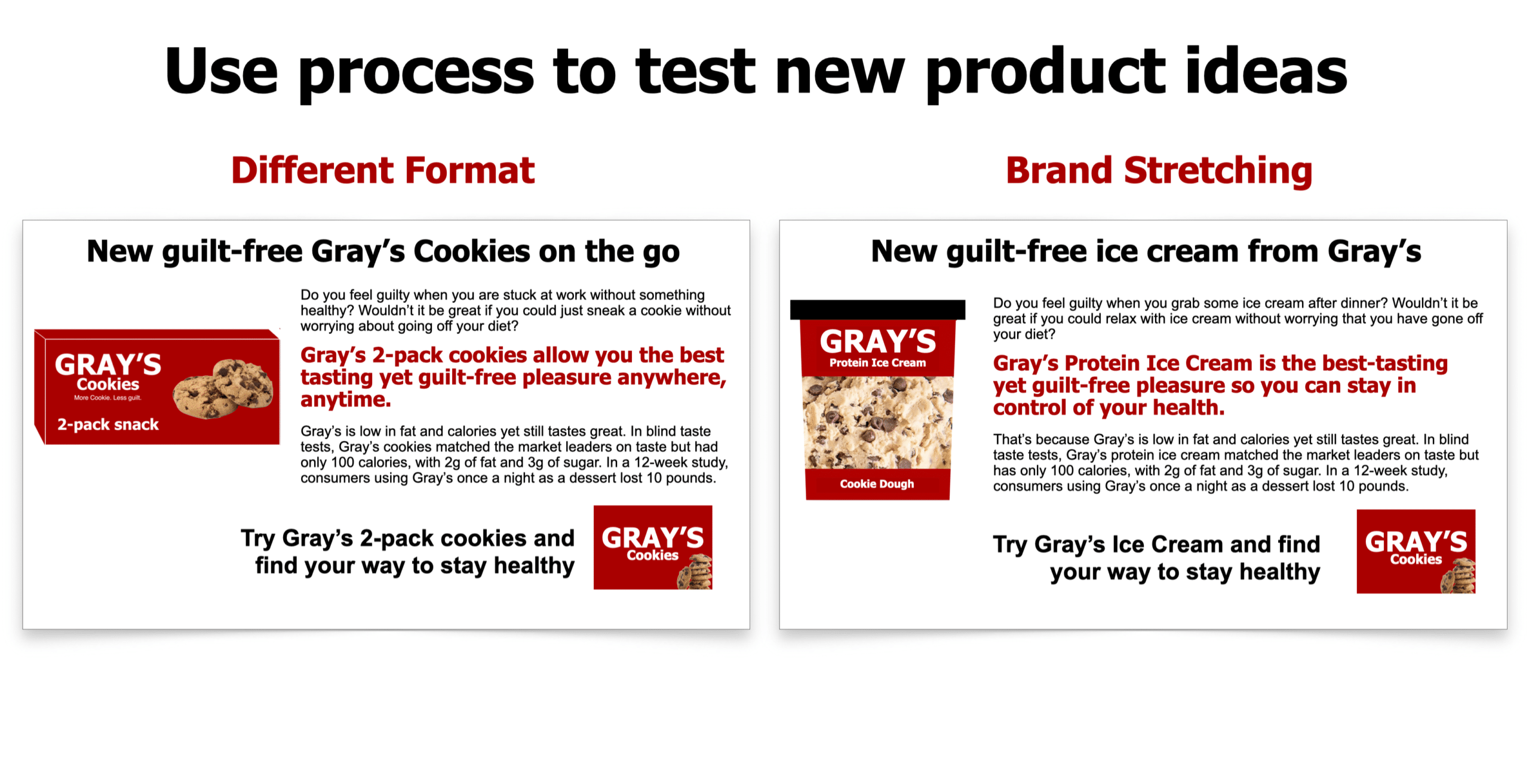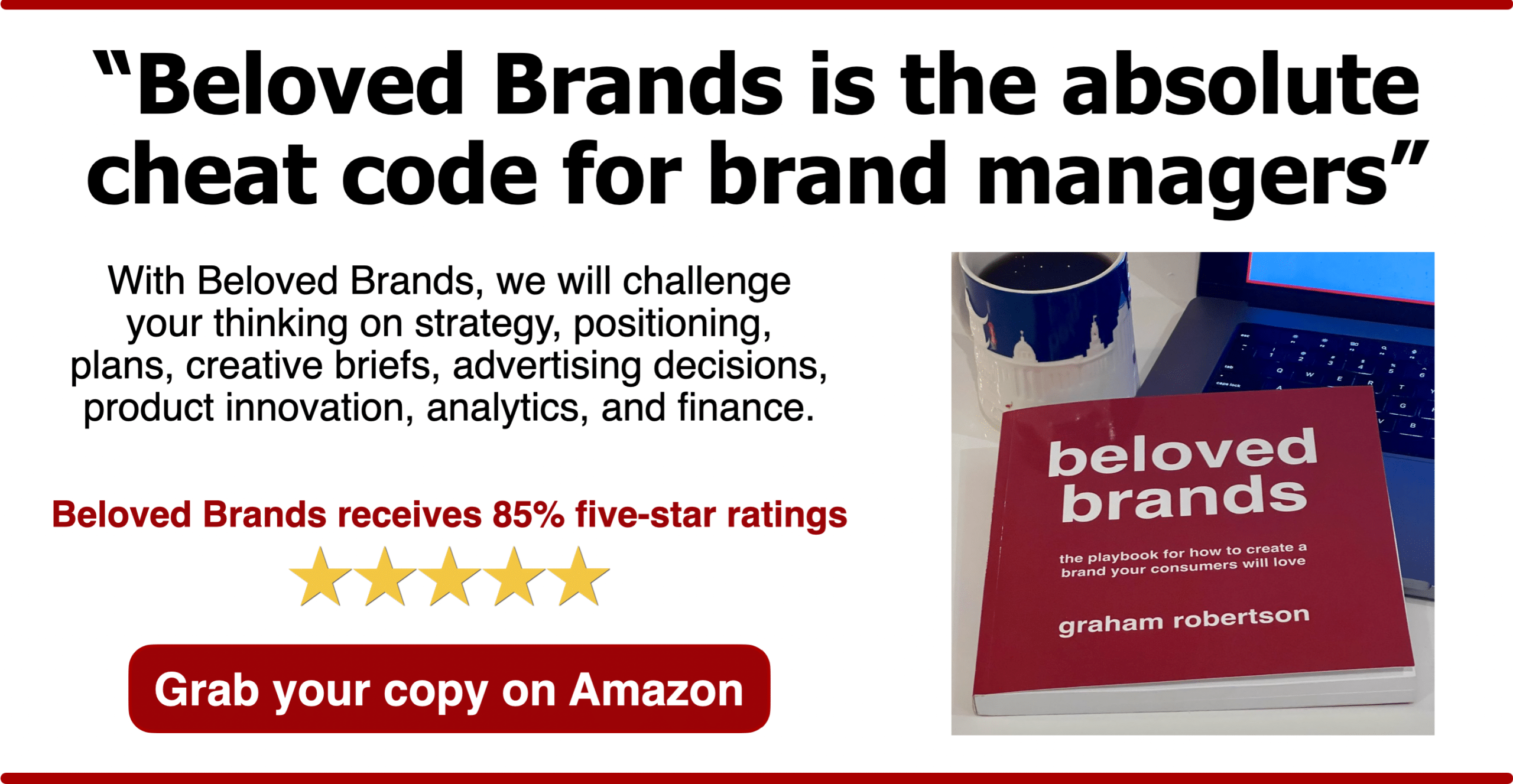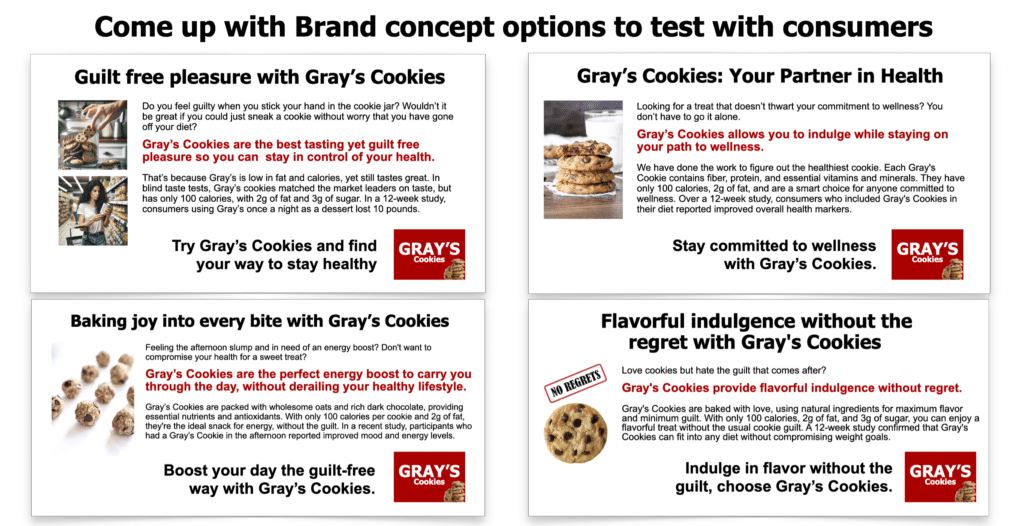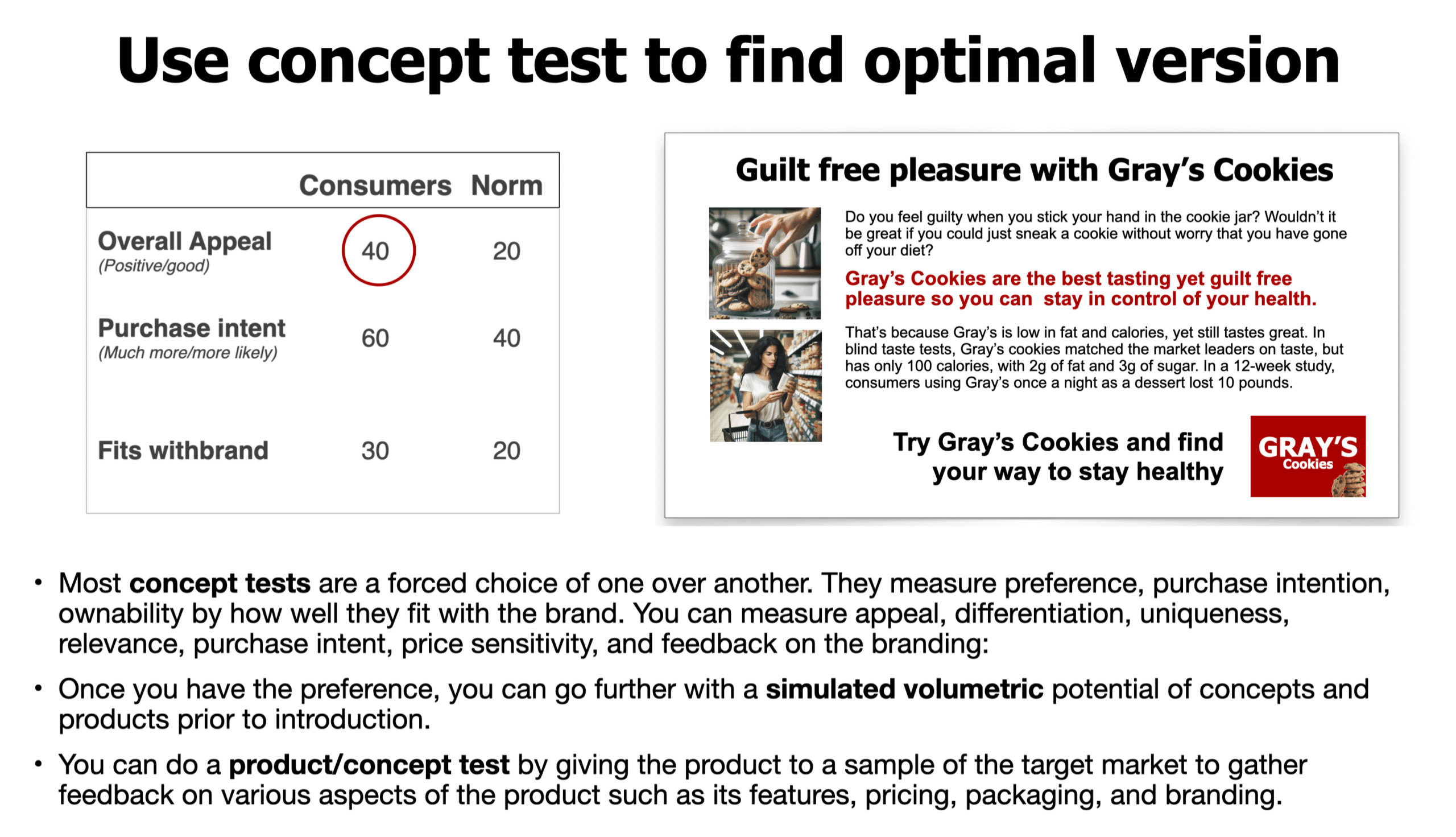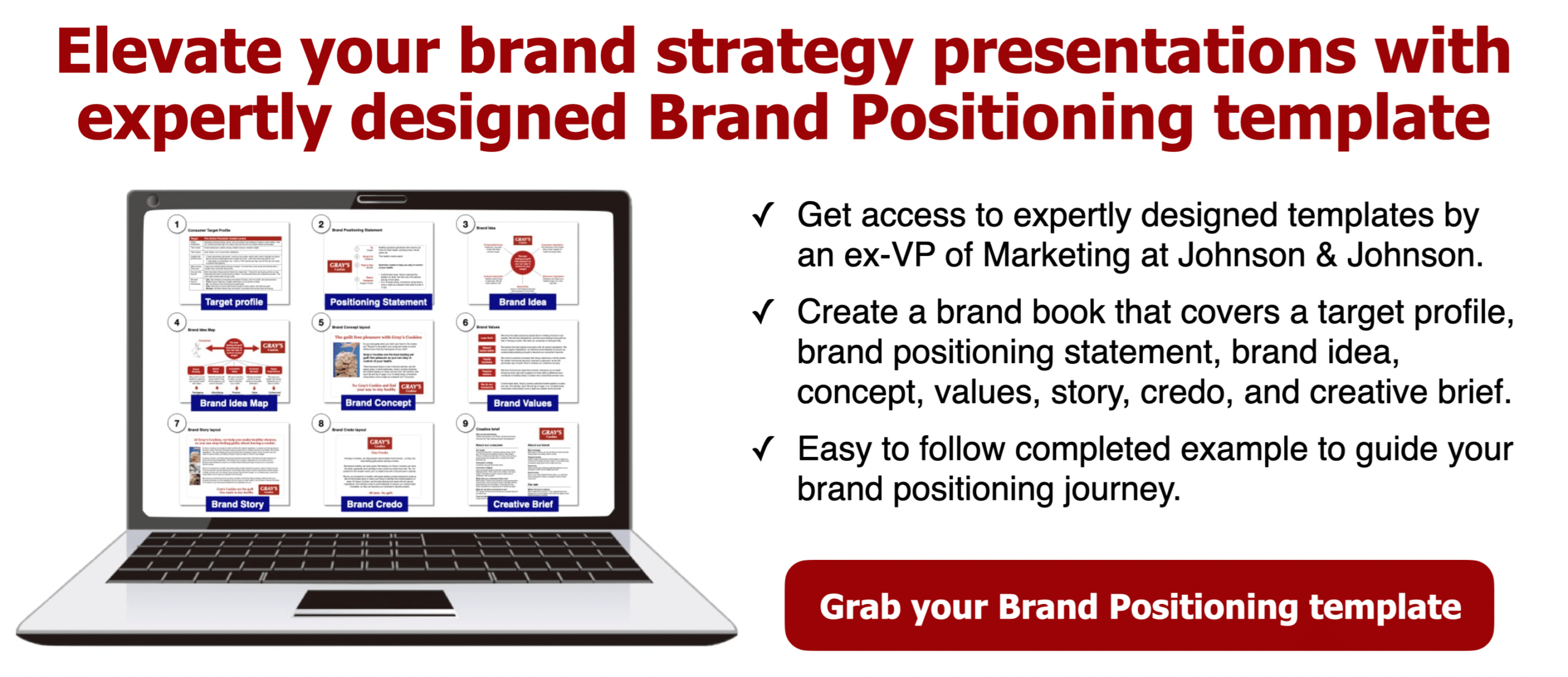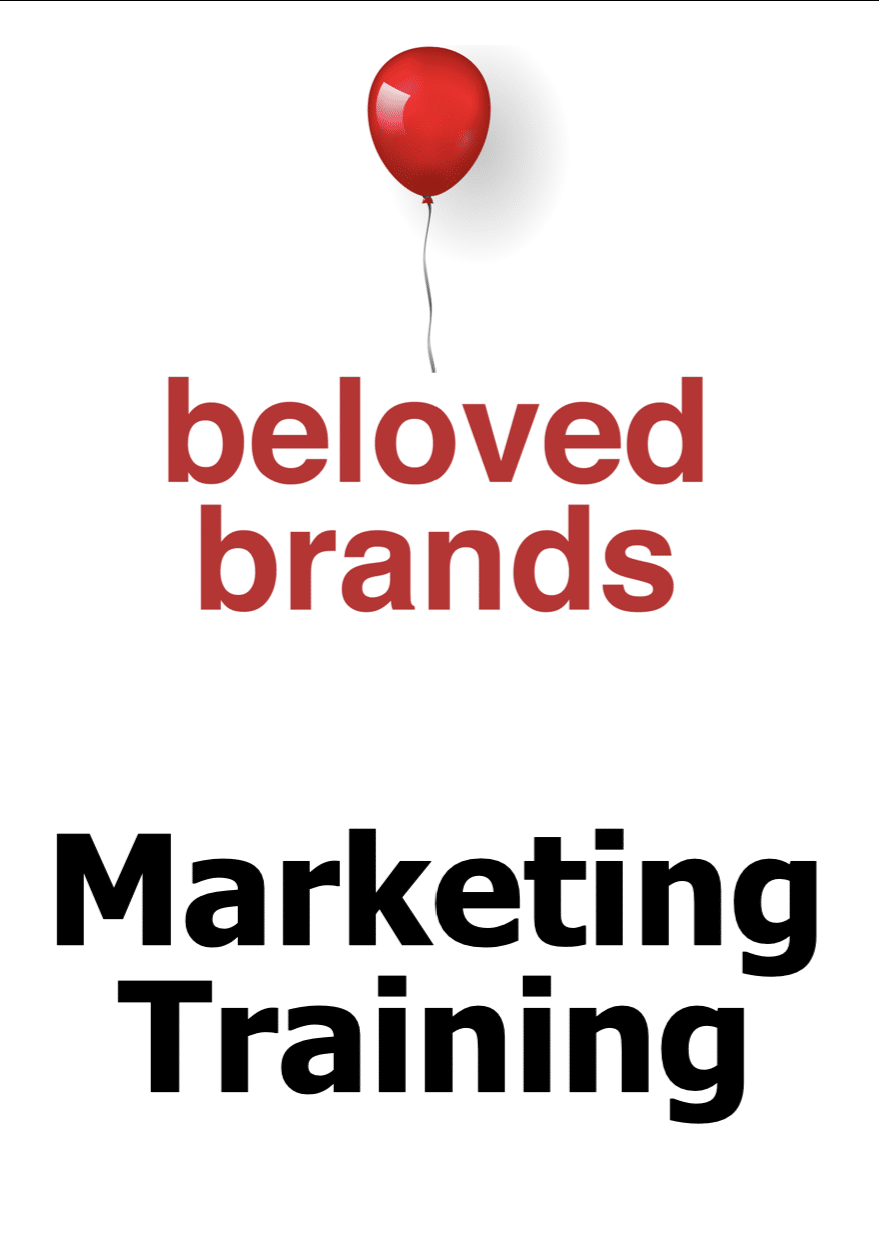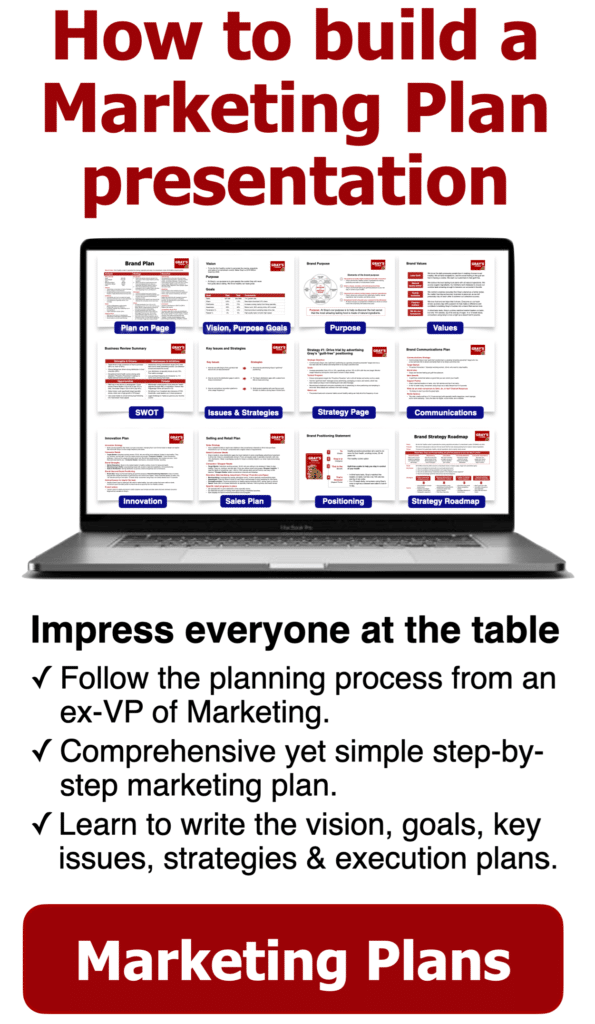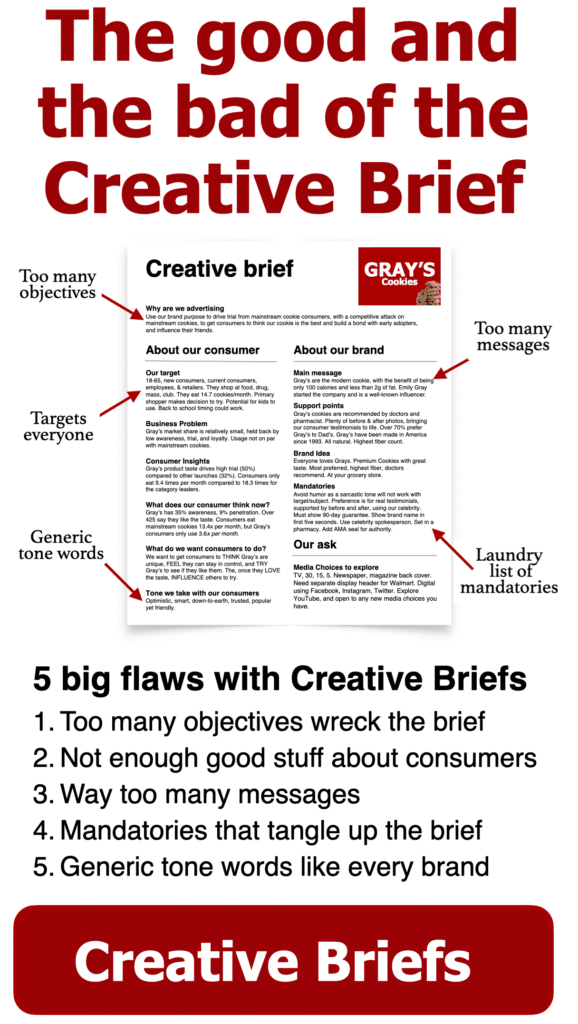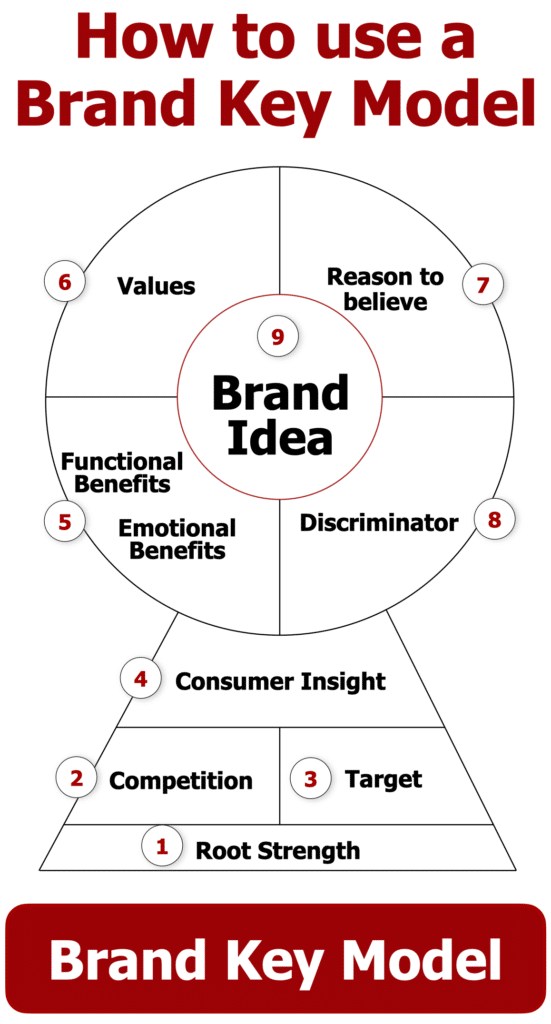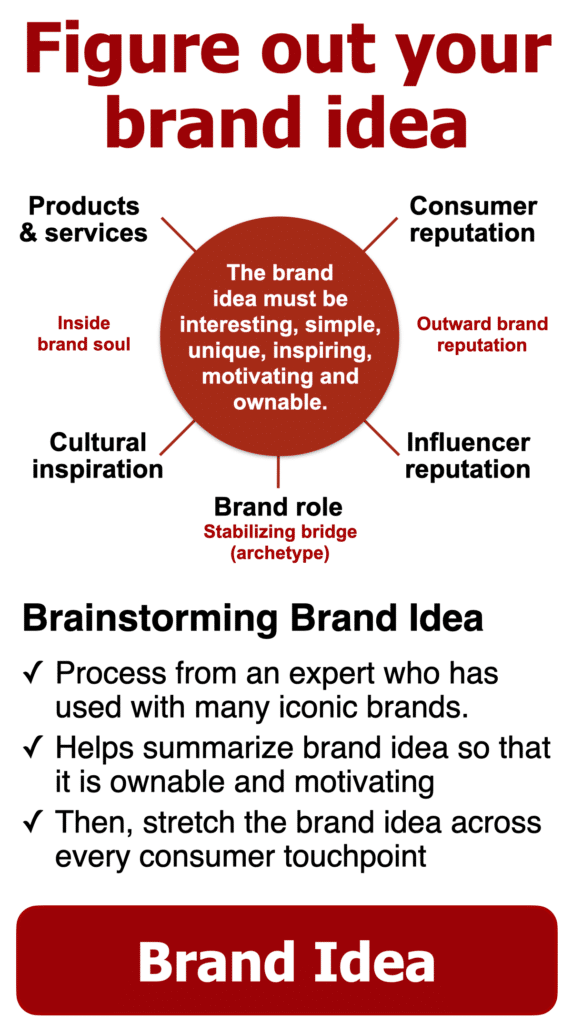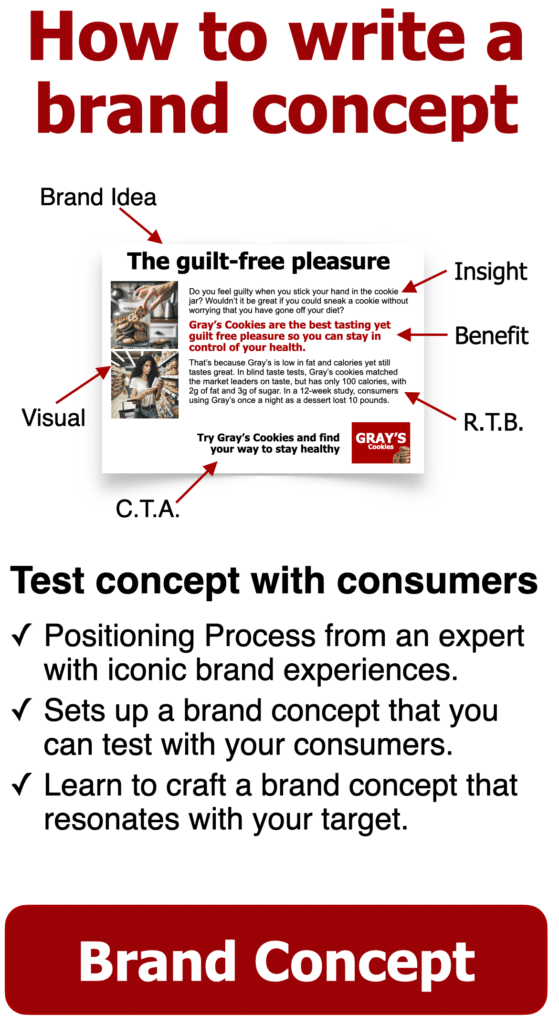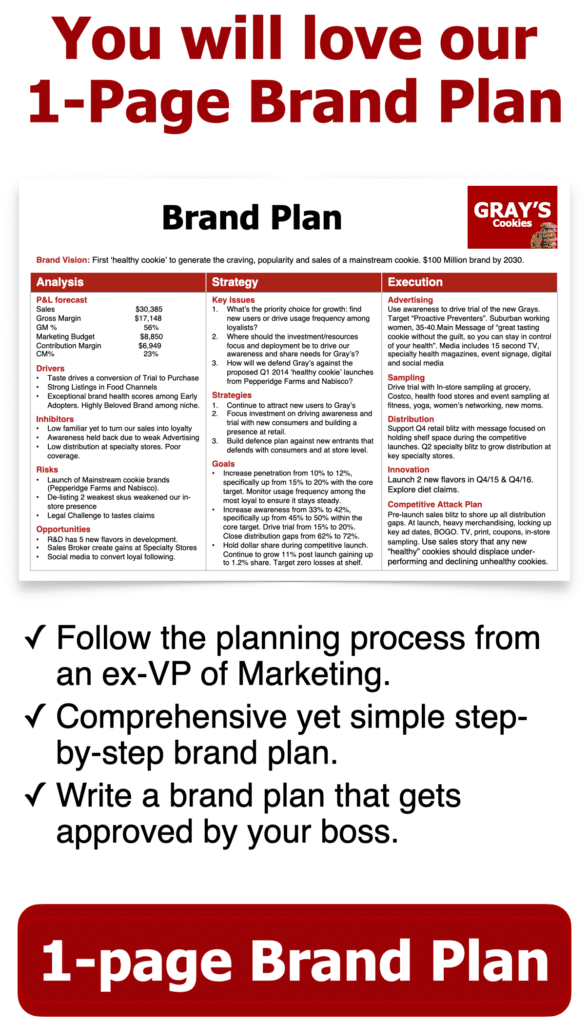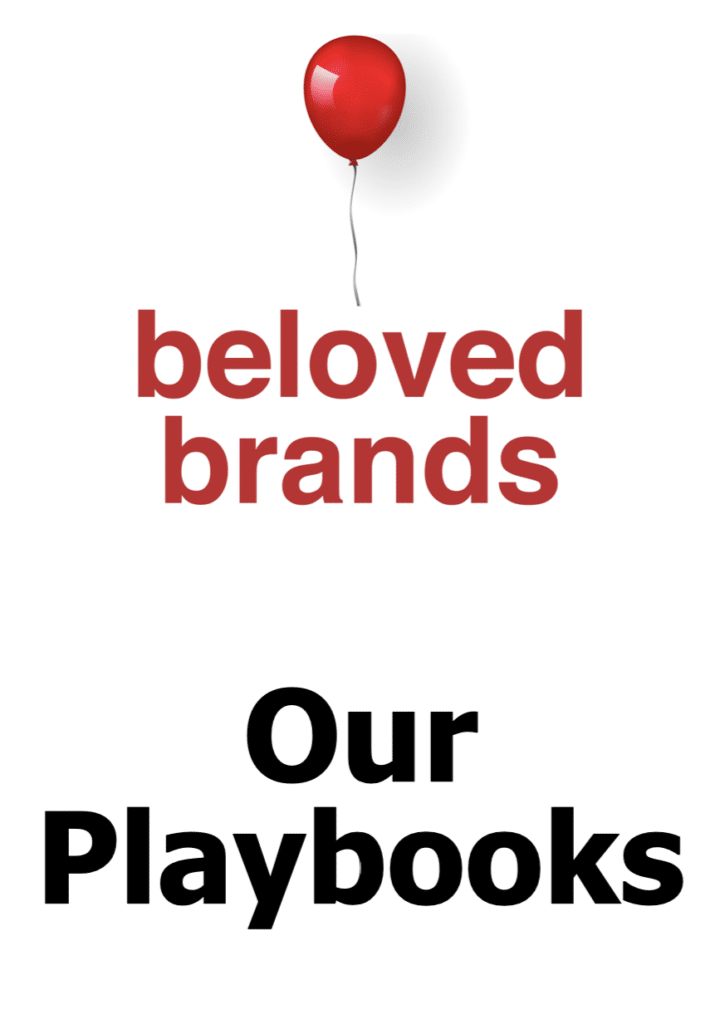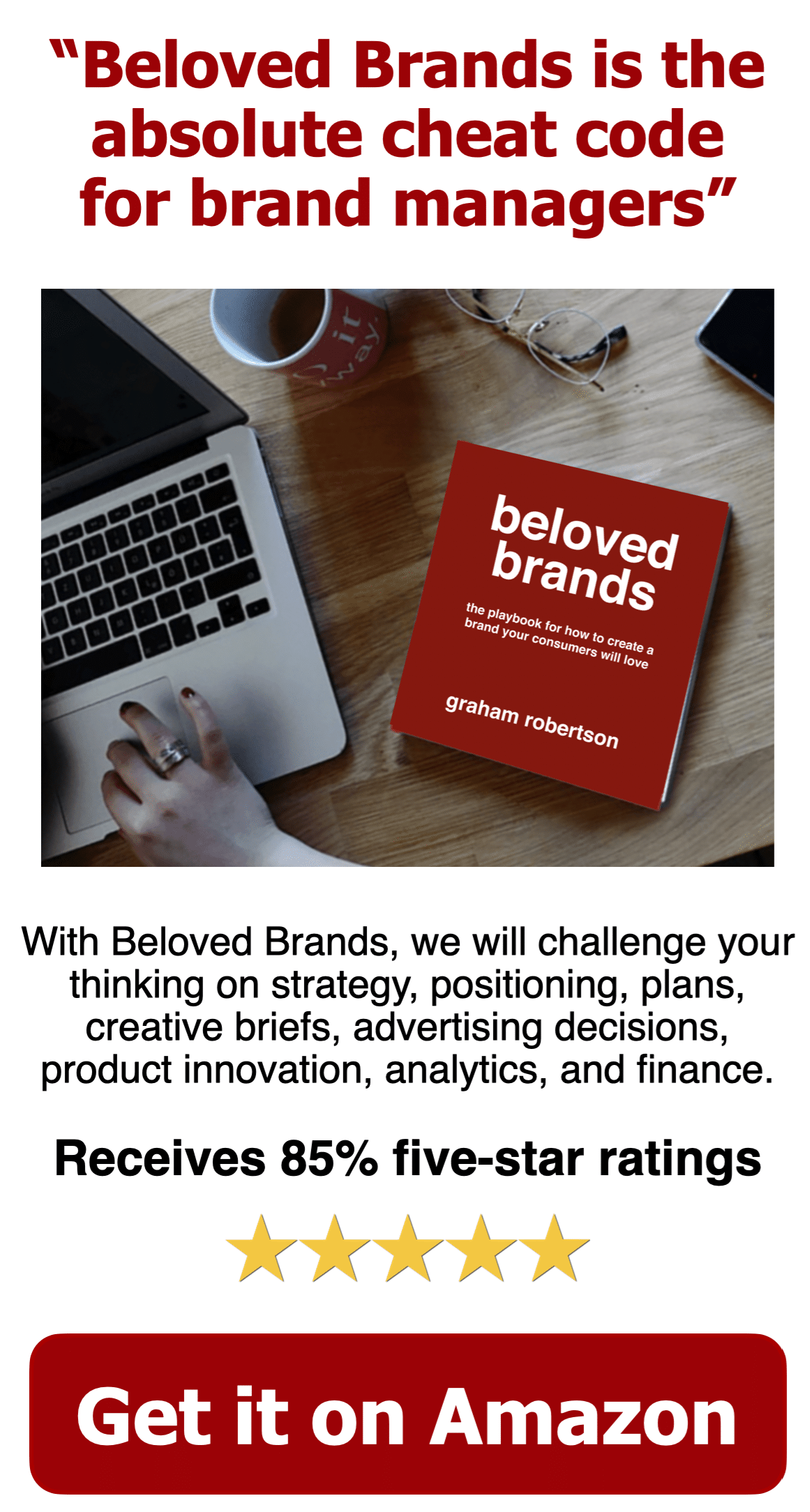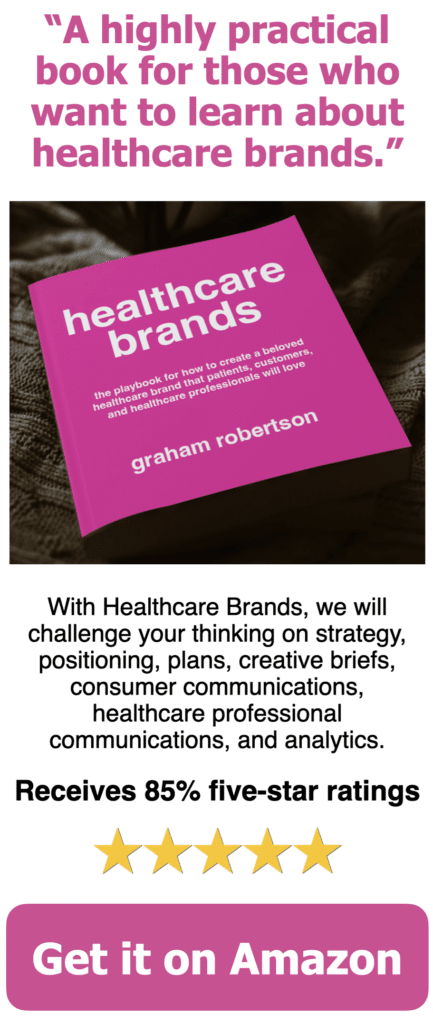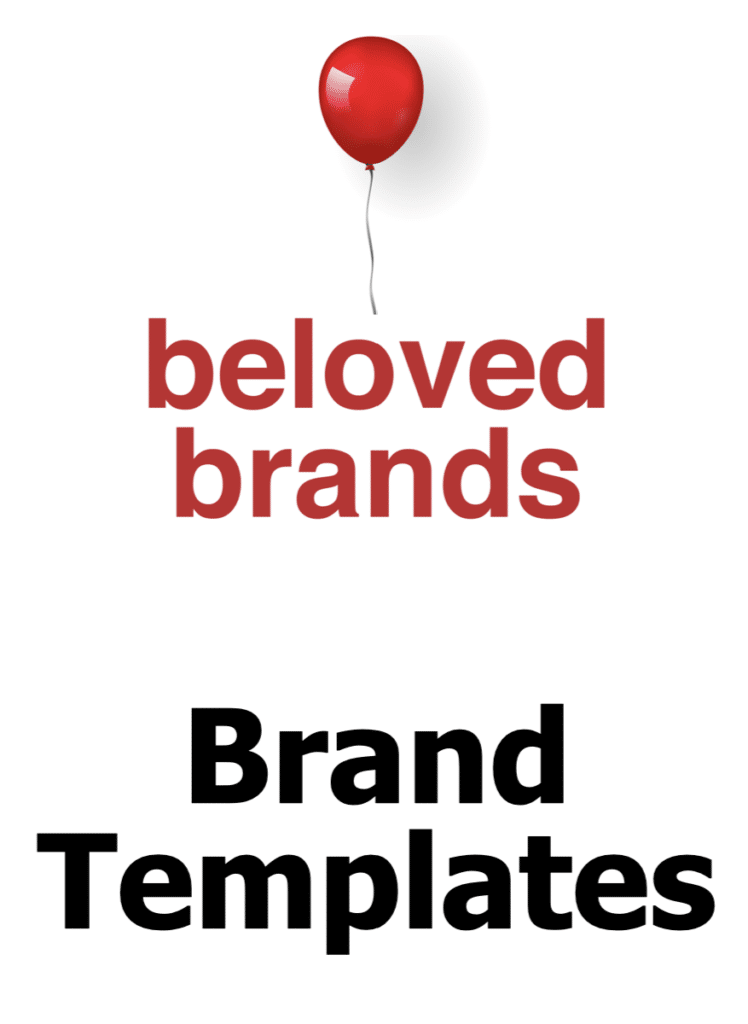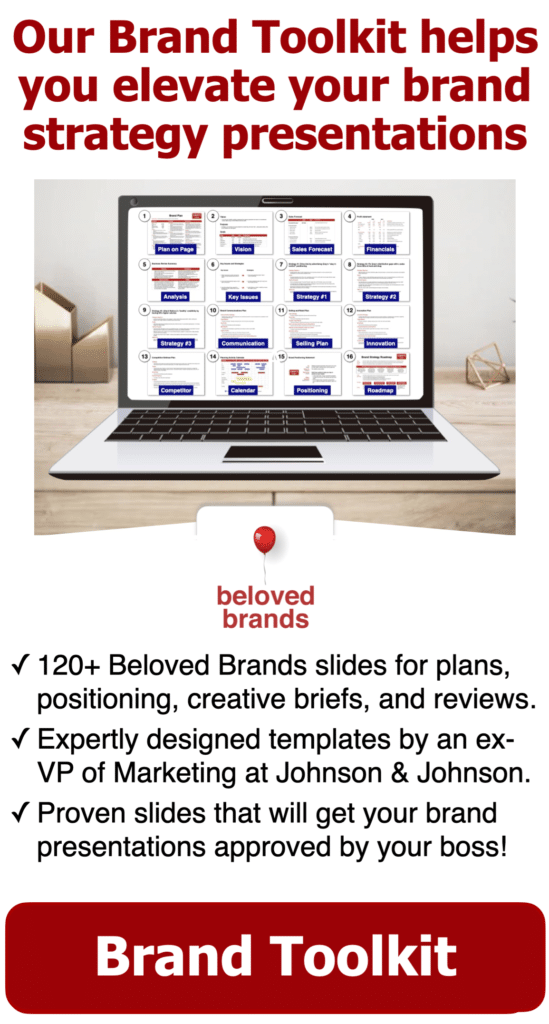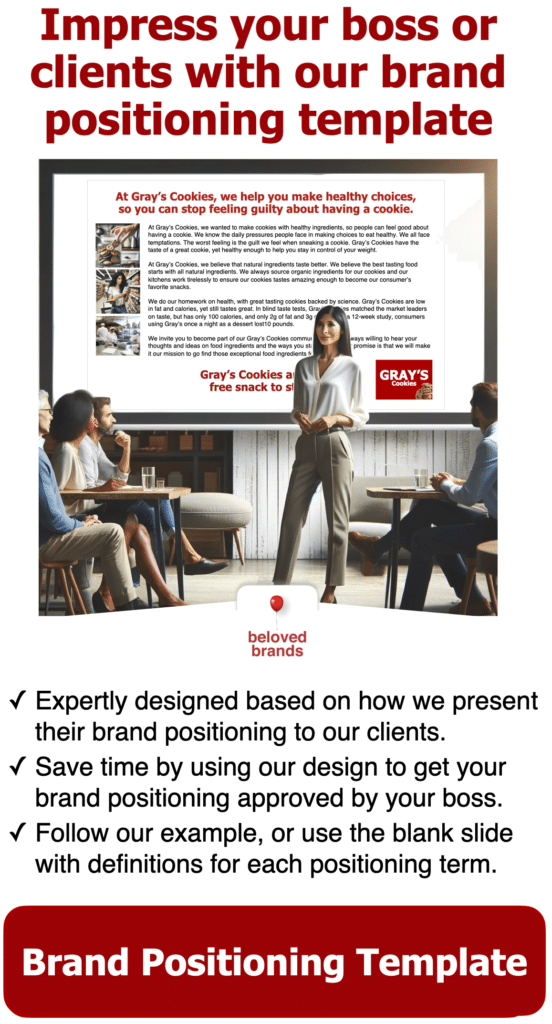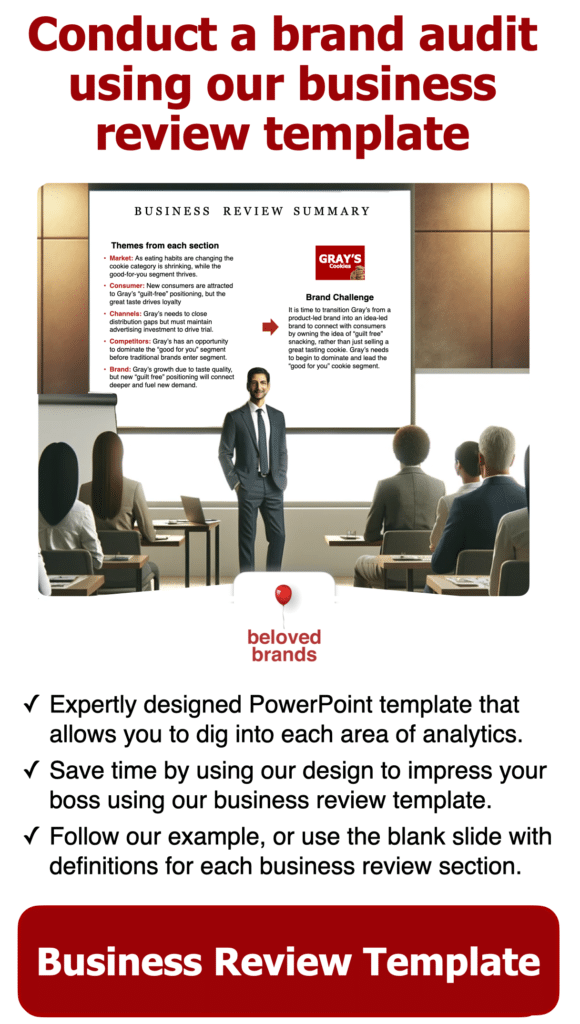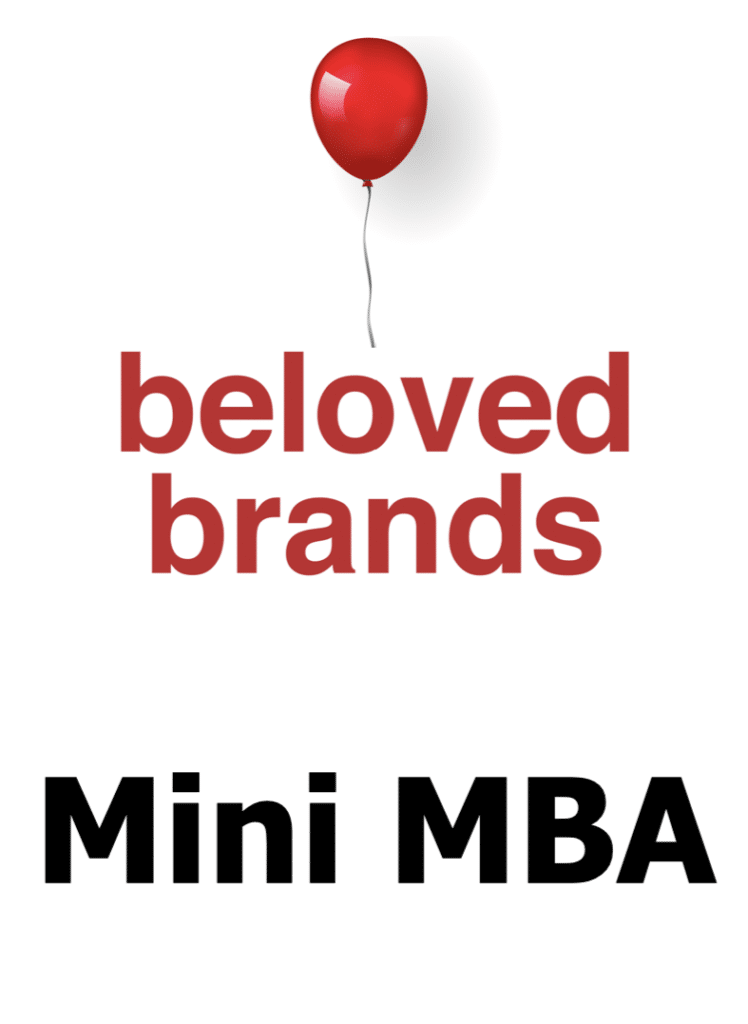Only a fool would start writing a brand concept without doing the necessary homework. I will show you how to write a brand concept that uses the brand idea, consumer insights, functional and emotional consumer benefits, and support points. Our brand concept process can also work for a product concept or the marketing concept. Furthermore, I will provide a few different brand concept examples. Think of your brand concept like a 30-second TV ad or a digital billboard. Most importantly, stay focused on your most essential messages. If you start with a blank piece of paper, you will have a random chance at success.
How to build a Brand Concept - Table of Contents
What is a brand concept?
Before you start, do the homework on your consumer target profile, brand positioning statement, and brand idea. Then, you will be ready to write a brand concept.
Be as realistic a manner as possible. Narrow down to one main benefit and two support points. Moreover, think of it as fitting on your package, a print ad, or a sales pitch. Too many brand leaders try to write concepts that include everything. They put in a long list of claims and reasons to believe.
There is no value in writing a cluttered concept with every possible point just to pass a test. You will find yourself unable to execute that concept in the market. That’s just not realistic.
When testing brand concepts with consumers, write a few different options. You can use qualitative focus groups or quantitative testing. You can also use this process for new product concepts.
To illustrate, we show our brand concept process that can be used for new product concepts or the marketing concept.
How do you create a brand concept?
- To start, the main headline should capture your brand idea. The headline is the first thing consumers will see. And, it will influence how they engage the rest of the concept.
- Second, every concept should start with a consumer insight (connection point) or consumer enemy (pain point). This helps captivate consumers enough to make them stop and think, “That’s exactly how I feel.” Your consumers feel more engaged with your concept. As well, the enemy or insight should set up the brand promise.
- Third, layer in the promise statement to bring the main consumer benefit to life with a balance of emotional and functional benefits.
- Next, use support points should close off any gaps that consumers may have after reading the main benefit. In addition, an emotional benefit may require functional support to cover off any doubt lingering in the consumer’s mind.
- Finally, complete the concept with a motivating call-to-action to prompt the consumer’s purchase intent, which is a significant part of concept testing. Furthermore, adding a supporting visual is recommended.
- This process will work for both brand concepts or new product concepts.
To illustrate, we show our brand concept process that can be used for new product concepts or the marketing concept.
To illustrate, we show our brand concept process that can be used for new product concepts or the marketing concept.
Start with your Brand positioning
Your brand concept should build upon the brand positioning statement, which provides the most useful function of taking everything you know about your brand, everything that could be said about the consumer and making choices to pick one target that you’ll serve and one brand promise you will stand behind.
A best in class brand positioning statement has four key elements:
- Target Market (1)
- Definition of the market you play in (2)
- Brand Promise (emotional or rational benefit) (3)
- The Reason to Believe (RTB) the brand promise (4)
The classic way to write a brand positioning statement is to take the elements above and frame them into the following: For the target market (1) Brand X plays in the market (2) and it gives the main benefit (3). That’s because of the following reasons to believe (4). Once you have your brand positioning statement, and your brand idea, you can build a brand concept. This process also works for product concepts.
Video Lesson: Brand Positioning
Our brand positioning statement video shows how to use our functional benefit cheatsheet and our emotional benefit cheatsheets. Importantly, we go through the process for how to build the ideal brand positioning statement.
To view, use the ▶️ controls to play or volume buttons.
Moreover, we show our brand concept process that can be used for new product concepts or the marketing concept.
To illustrate, we show our brand concept process that can be used for new product concepts or the marketing concept.
And, we show our brand concept process that can be used for new product concepts or the marketing concept.
Testing brand concepts using consumer research
Why brand concept testing is the key to building a winning brand.
The concept testing process is a systematic way to find out what people think of your idea and whether they would be interested in it.
It is one stage in the development process where you can get valuable feedback before you invest time and money into developing a product, service or technology that may not be what people want or need.
The more information you can gather from different sources at the concept testing stage, the better chance you have of creating a successful new product.
A good concept test will not only save you time and money, but also make your product more likely to succeed by giving you the opportunity to fix potential design flaws before they become major issues.
Soliciting the opinions of consumers
Research helps get the opinions and attitudes of people in a specific group. It is used in the marketing industry for product development, making decisions about what to offer, and gauging public opinion on an issue.
Qualitative market research
Focus groups are a type of qualitative research that is used to gain insights from a group of people about a specific product or service. When you are at the early stages of brand concept process, they are a great tool for getting consumer feedback.
Focus groups are created to generate feedback for an organization’s products, services, and overall customer experience. They are conducted in person or online. Participants can be employees, customers, former customers, potential customers, or any other stakeholders that the organization wishes to consult within the target demographic.
A focus group consists of 8-10 people who share similar demographic characteristics and have typically done some background research on the task at hand by viewing products and/or reading company information beforehand.
Quantitative Market Research
Quantitative market research is a type of market research that relies on numerical data to evaluate the size, scope, and needs of a target audience.
It looks for specific metrics in order to measure the success or failure of a particular product or service. Quantitative data can be collected through a variety of methods such as surveys, focus groups, and studying trends in existing financial reports.
Quantitative Market Research Process
It measures and analyze the numbers found in a given set of data. Know the difference between Quantitative research and qualitative research. It focuses on mathematical measurements, rather than human experiences or opinions.
Quantitative market research process includes both primary and secondary market research with a few steps:
- Identify the product or service needs
- Generate ideas for possible solutions to fulfill those needs
- Select the best ideas to align with the business goals;
- Generate customer feedback
- Gather data on what customers think about your product/service
- Analyze data and find any potential risks or problems that may arise.
Building a Brand Book
Get our Brand Positioning template in a downloadable PowerPoint file to help you get started on managing your brand. We include PowerPoint slides for target profile, brand positioning statement, brand idea, brand concept, brand values, brand story, brand credo, and a creative brief.
Qualitative vs. Quantitative Market Research
Qualitative research is generally more expensive and time-consuming than quantitative research. It is often used when the goal is to find out about people’s attitudes and opinions, rather than get hard data on how many people do what.
Quantitative research involves surveying a large number of respondents in order to come up with accurate statistics on things like brand awareness or lifestyle choices. This type of research is usually used in areas where there are strict deadlines, so it’s best for when you need to know the facts in a hurry!
For brand concept testing, I prefer a balance of qualitative and quantitative. I want to listen for details, and get an accurate projection to help me build a launch plan.
To explore five ways to do free market research: Five free ways to do research
Summary of the brand concept process
Go through our brand concept process with your brand. Do the homework on finding the consumer insights, brand positioning, and brand idea. You can also try this if you are testing new product concepts. We have provided plenty of brand concept examples to see what you can learn and find inspiration for your brand concepts.
Creative Brief
Learn more about how to write creative briefs
The role of the creative brief is the bridge between your strategic plan and any type of marketing execution. You should have a creative brief for any type of advertising, content marketing, logos, packaging design, websites, videos, or conferences. The creative brief distills everything you could possibly say into only those elements that matter. I will show you how to write a creative brief that inspires your agency.


